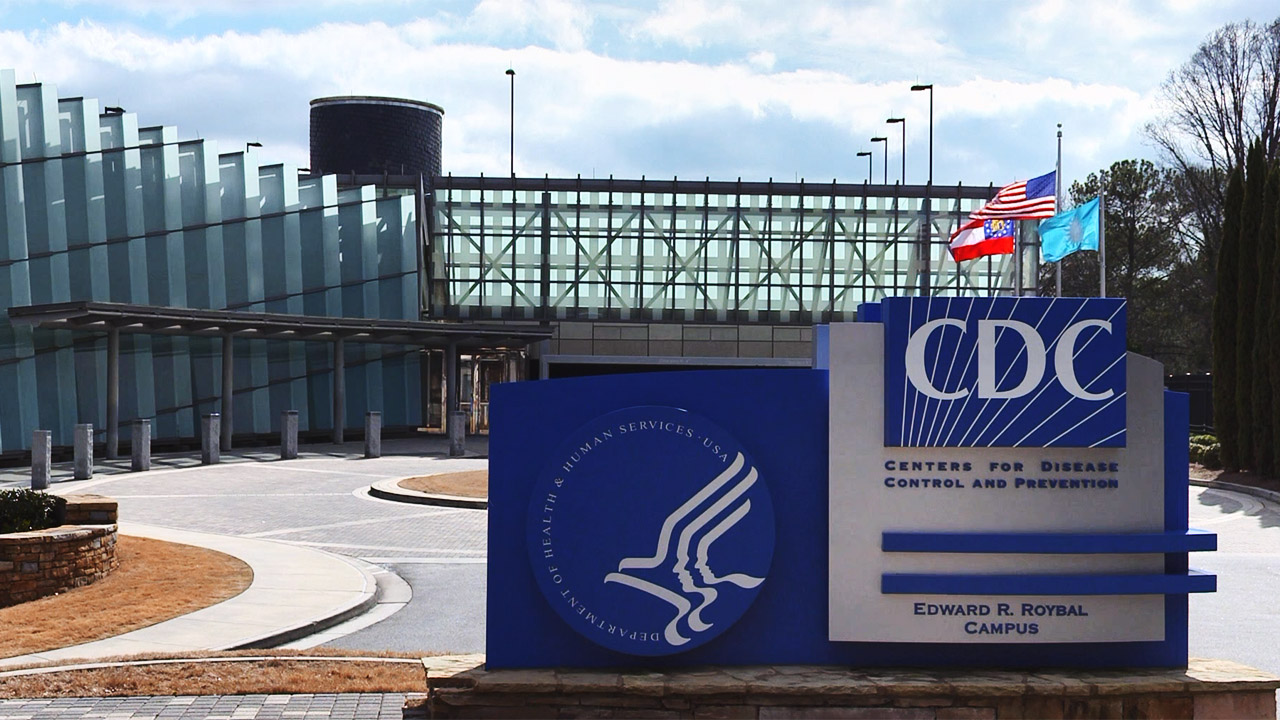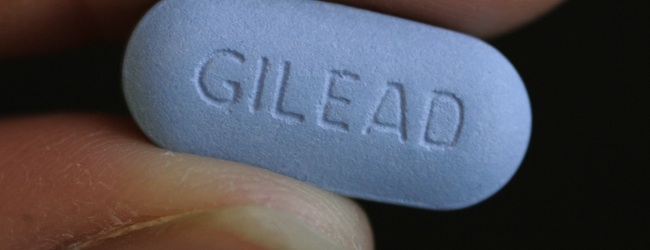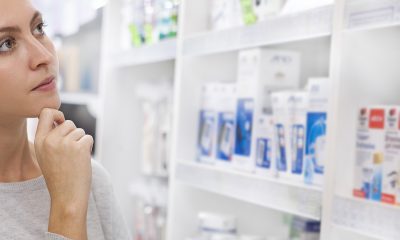Health
FDA approves HIV ‘prevention’ pill
AIDS activists divided over benefit versus risk of Truvada
The U.S. Food and Drug Administration on Monday announced it has approved use of the AIDS drug Truvada for reducing the risk of HIV infection among uninfected people considered at high risk for contracting HIV through sexual contact.
The decision to allow Truvada to be taken daily in the form of a pill as part of a prevention regimen known as pre-exposure prophylaxis, or “PrEP,” has drawn mixed reactions among AIDS advocacy organizations, with most supporting the decision.
But others have raised strong objections, saying potentially harmful side effects of Truvada along with the risk of HIV infection through non-adherence to a rigid daily drug regimen, which in turn could lead to drug-resistant strains of HIV, far outweigh the benefits.
“Today’s approval marks an important milestone in our fight against HIV,” said FDA Commissioner Dr. Margaret Hamburg. “Every year, about 50,000 U.S. adults and adolescents are diagnosed with HIV infection, despite the availability of prevention methods and strategies to educate, test, and care for people living with the disease,” she said.
“New treatments as well as prevention methods are needed to fight the HIV epidemic in this country,” Hamburg said.
Truvada, which is manufactured by the pharmaceutical firm Gilead Sciences, was first approved in 2004 by the FDA for use as a treatment for HIV.
In announcing its approval for use as a prevention drug, the FDA pointed to two large placebo-controlled trials of the drug as a prophylaxis that were sponsored by the U.S. National Institutes of Health and the University of Washington.
One of the trials conducted in the U.S. and abroad evaluated the drug in 2,400 HIV-negative men or transgender women who have sex with men and who are prone to “high risk behavior,” such as inconsistent or no condom use during sex, according to a statement released by the FDA.
“Results showed Truvada was effective in reducing the risk of HIV infection by 42 percent compared with [a] placebo in this population,” the FDA statement says.
It says the second trial included 4,759 heterosexual couples where one partner was HIV-infected and the other was HIV negative. Truvada reduced the risk of becoming infected by 75 percent compared to participants taking a placebo, the FDA statement says.
Among those supporting the FDA decision to approve Truvada as a prevention drug is Project Inform, the San Francisco based HIV patient advocacy group that has closely observed prevention and treatment options for people with HIV and AIDS for more than 20 years.
“Project Inform is extremely pleased with a landmark decision by the FDA to approve the first biomedical HIV prevention product in the history of the epidemic,” the group said in a statement.
“Finally, after 30 years, HIV-negative individuals have a new way to protect themselves from becoming infected,” said Project Inform Director Dana Van Gorder. “While PrEP isn’t a tool that will be appropriate for broad use, we are thrilled to have a new option that could offer substantial benefit to those at highest risk for HIV, including gay and bisexual men and transgender women who struggle with consistent condom use, and in heterosexual women living in areas with high HIV rates whose partners refuse to use condoms,” Van Gorder said.
The AIDS Institute, a national AIDS advocacy group with offices in Washington, D.C. and Florida, and the Boston-based Fenway Health and its research arm Fenway Institute also issued statements supporting the FDA action.
Taking the opposite view is the Los Angeles based AIDS Healthcare Foundation, which provides HIV/AIDS treatment programs in the U.S. and in countries throughout the world, including Africa and Asia.
“My initial reaction is that this is a catastrophe for AIDS prevention in the U.S.,” said Michael Weinstein, AHF’s executive director.
Weinstein said global trial studies cited by the FDA involved constant monitoring and encouragement by organizers to ensure that participants adhered to their daily drug regimen as well as engaged in safer sex practices, such as condom use.
“The bottom line is that was under ideal conditions,” he said. “People were tested monthly. They were intensively counseled. They were paid to be in the study. And only about 50 percent took the drug.”
He predicted far fewer people “in the real world” would be compliant in taking their daily drug regimen, especially since the drug, as reported by Gilead Sciences, induces occasional side effects in healthy people such as headache, stomach discomfort and weight loss.
Weinstein said that in addition to opening the way for users to lower their guard and stop using condoms, even though the FDA approval calls for continued use of safer sex practices along with Truvada, the drug is highly dangerous for people who become HIV positive without knowing it.
In its published drug warnings, Gilead says use of Truvada alone is harmful to people with HIV unless they use it in combination with other antiretroviral drugs. Weinstein said he fears that people using Truvada as a prevention pill and become HIV positive after failing to take the drug every day could be at high risk – both for becoming ill and developing a drug resistant strain of HIV.
Dr. Debra Brinkrant, an FDA official who has monitored the Truvada studies, said an analysis of the trial studies showed that those who used Truvada used condoms more frequently and did not discontinue condom use.
“Everyone has to work together to make sure this works,” she said. “We must see that adherence is maintained. This is a first step to cut the infection rate,” a rate she said has not decreased in spite of years of other HIV prevention and education programs.
Justin Goforth, director of medical adherence and head of the Sexually Transmitted Disease Clinic at D.C.’s Whitman-Walker Health, said Whitman-Walker has already been prescribing Truvada as a prevention pill as part of a small study program. He said Whitman-Walker will likely expand the number of people it approves for use of the drug as a prevention medication now that the FDA has issued its approval.
“A lot of gay men are coming in and begging us to get this,” he said. “This is clearly not for everyone. The issue is finding the right people. They have to be people at high risk,” he said, adding that men who have sex with men who themselves or their partners have trouble being complaint with condom use, or those with multiple sex partners, would be among those considered for Truvada as a prevention pill.
Goforth acknowledged that the NIH sponsored trials of Truvada for men who have sex with men and transgender women had an adherence rate of about 50 percent. The fact that they were paid to be in the trials could have been responsible for the low adherence rate, with many choosing to join the program for the purpose of taking the money rather than the pills, Goforth said.
But he said Whitman-Walker has found through its limited Truvada trial program for HIV negative people that those seeking out the drug have followed the daily pill regimen.
“I feel people who come forward now to take this have a greater incentive for compliance,” he said.
And Goforth pointed to studies showing that Truvada’s effectiveness in preventing HIV infection is greater than 90 percent among those who take the pill every day.
Health
UNAIDS to commemorate Zero Discrimination Day’s 10th anniversary
UN agency urges global action to protect human rights

As the world marks the 10th anniversary of Zero Discrimination Day; UNAIDS is sounding the alarm on the increasing threats to human rights, calling for renewed efforts to protect the rights of all individuals as a fundamental step towards ensuring health for everyone.
Established by UNAIDS a decade ago, Zero Discrimination Day aims to promote equality and fairness regardless of gender, age, sexuality, ethnicity or HIV status. The progress achieved over the past years is now in jeopardy, however, due to rising attacks on the rights of women, LGBTQ people and other marginalized communities.
UNAIDS Executive Director Winnie Byanyima emphasized the critical link between protecting human rights and safeguarding public health.
“The attacks on rights are a threat to freedom and democracy and are harmful to health,” she said in a press release. “Stigma and discrimination obstruct HIV prevention, testing, treatment and care and hold back progress towards ending AIDS by 2030. It is only by protecting everyone’s rights that we can protect everyone’s health.”
Despite challenges, there has been notable progress.
At the onset of the AIDS pandemic more than 40 years ago, two-thirds of countries criminalized consensual same-sex sexual relations. They are now decriminalized in two-thirds of countries. An additional 38 countries around the world have pledged to end HIV-related stigma and discrimination, contributing to positive changes that include 50 million more girls attending school compared to 2015.
To sustain and enhance these advancements; UNAIDS urges global support for women’s rights movements, LGBTQ rights, racial justice, economic justice, climate justice and peace initiatives. By standing with communities advocating for their rights, the U.N. aims to reinforce the collective effort towards a more inclusive and equitable world.
Zero Discrimination Day is observed on March 1.
Events and activities that will take place around the world throughout the month will serve as reminders of the essential lesson and call to action: Protecting everyone’s health is synonymous with protecting everyone’s rights.
“Through upholding rights for all, we will be able to achieve the Sustainable Development Goals and secure a safer, fairer, kinder and happier world — for everyone,” said Byanyima.
Health
New CDC report finds transgender women at higher risk for HIV
More than 1,600 people in seven cities surveyed

The Centers for Disease Control and Prevention issued a new study report this week that revealed that restricted by employment and housing discrimination and lack of access to needed gender-affirming healthcare for transgender women increasing the risk of contracting HIV.
Researchers reviewed data from a 2019-2020 survey, the National HIV Behavioral Surveillance Among Transgender Women, which found that the demographics of HIV/AIDS have been disproportionally high, especially among Black and Latina trans women, who had experienced employment and housing discrimination coupled with lack of access to gender-affirming healthcare.
The Jan. 25 Morbidity and Mortality Weekly Report was based on data studies of more than 1,600 trans women in seven major urban locales. Participants from Atlanta, Los Angeles, New Orleans, New York, Philadelphia, San Francisco and Seattle were chosen by referrals from people and community-based organizations who knew or were part of the local population of trans women.
The study’s researchers noted: “Employment discrimination occurs at the overlapping nexus of poverty, homelessness, incarceration, health insurance, disability, food insecurity and survival sex work. These issues are interconnected.”
The study stated that trans women’s inability to access quality healthcare, including gender-affirming treatment or access to PrEP, and can expose them to potential incarceration as many turn to “survival sex work” and violence, which increases the risk of contracting HIV.
The study’s author’s pointed out: “When economically marginalized transgender women are refused employment, this refusal cyclically contributes to economic hardships. This analysis …demonstrates the importance of transgender women working and living with dignity and without fear of unfair treatment.”
Health
A Whole New Perspective on Well-Being
The Mather’s team recognizes that everyone’s wellness journey is completely unique to their life experiences and influences.

It’s easy to spot the distinctive, elegant silhouette of The Mather, a Life Plan Community for those 62+ opening this spring in Tysons, Virginia. What is not apparent to the naked eye is The Mather’s unique wellness philosophy, which is literally built into the community.
The Mather’s team recognizes that everyone’s wellness journey is completely unique to their life experiences and influences.
Nature is one of the important factors that contribute to well-being. So The Mather is incorporating biophilic design—a design approach to facilitate access to nature or things that replicate natural patterns. This can include interior spaces with sightlines to a garden, choosing natural wood and stone as interior materials, or incorporating fragrant flowers and plants indoors to spark memories and provide tactile opportunities such as gardening.

“Providing biophilic design within interior settings connects residents to the natural world,” says Mary Leary, CEO and President of Mather, the organization behind The Mather. “Research shows that a connection to nature provides positive benefits to mental states and overall well-being. At The Mather, biophilic design is the intersection of buildings and programs with nature in an urban setting.”
“The Mather is attracting a diverse group of older adults,” says Mary. “As a result, we aim to incorporate wellness practices from around the world, including Wyda movement theory of the Celtic Druids, which helps people achieve harmony with nature and contentment through mindfulness.” This holistic regenerative approach is similar to Qi Gong and yoga, while born in a different part of the world. Mather Institute has a special focus on mindfulness to support older adults’ practice of present moment awareness, which can lead to increased overall well-being, compassion, and joy.
A very different example of a wellness offering at The Mather is the Gharieni Welnamis spa wave bed, which uses computer-controlled vibrational therapy and audio frequencies to train the brain to relax. “The bed increases mindfulness, concentration, and creativity—all of which support our mission of creating Ways to Age Well,SM” says Mary.
These and other personalized ways to wellness will ensure that residents of The Mather can choose from seemingly countless ways to focus on their well-being. In other words, the sky’s the limit!
-

 Africa4 days ago
Africa4 days agoCongolese lawmaker introduces anti-homosexuality bill
-

 District of Columbia18 hours ago
District of Columbia18 hours agoReenactment of first gay rights picket at White House draws interest of tourists
-

 World4 days ago
World4 days agoOut in the World: LGBTQ news from Europe and Asia
-

 Arizona23 hours ago
Arizona23 hours agoAriz. governor vetoes anti-transgender, Ten Commandments bill













